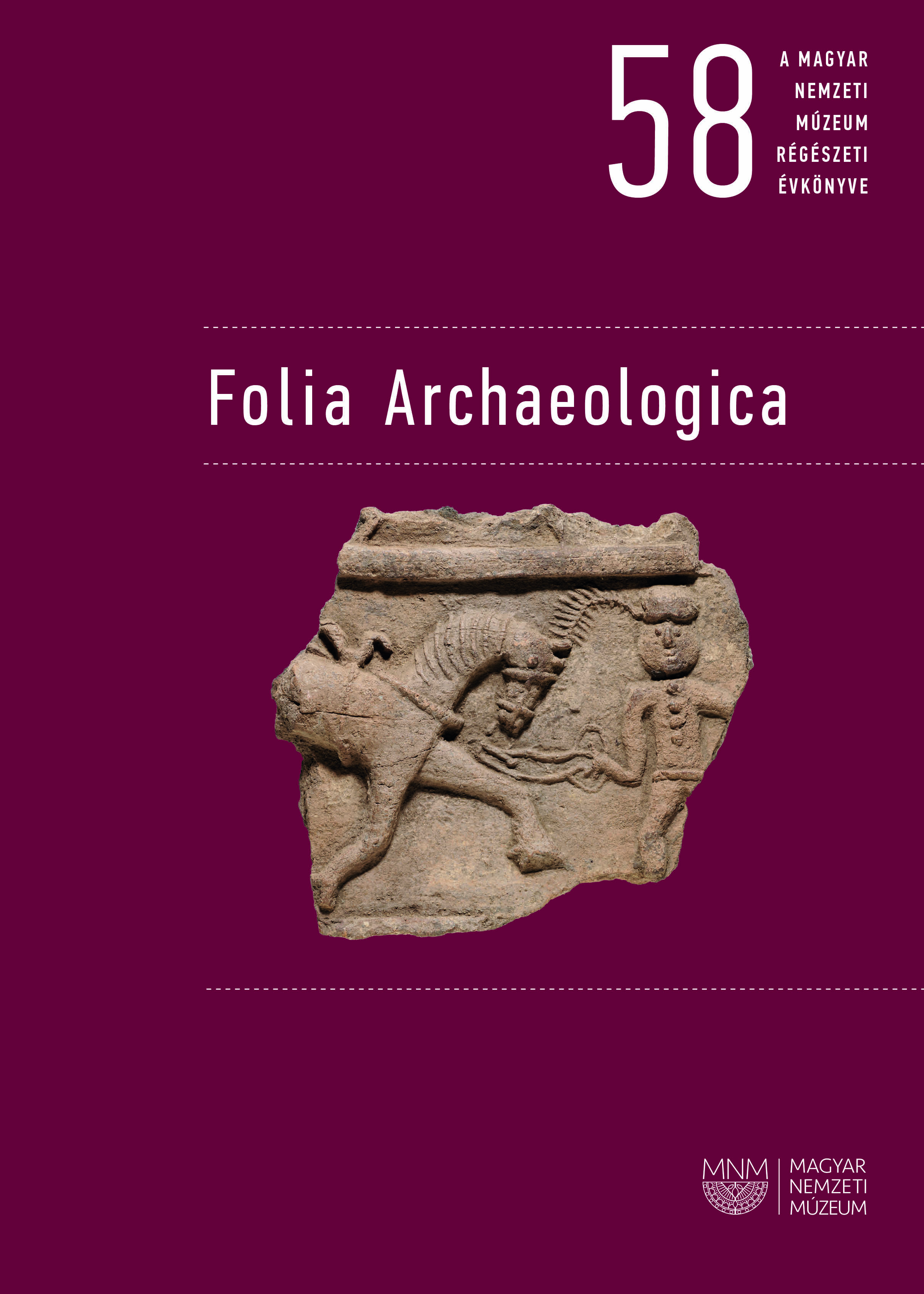Settlement Remains in the Territory of Visegrád-Kőbánya Dated to the First and Second Centuries AD
DOI:
https://doi.org/10.62259/YRUF6531Keywords:
Visegrád-Kőbánya, Late Celtic period, Early Roman period, surviving settlement, RomanizationAbstract
The excavations at the site of Kőbánya have brought to light two pit-houses (Pit A and a “pit dwelling”), a refuse pit, and three sections of wall built without mortar, so far. Nevertheless, their relationship to one another, their exact structure, and their function cannot be established. The reason for the presence of roof tiles and stones covered with mortar in the early Roman layer could not be explained, either. The excavated pit-houses are located at a distance of about 40 m from each other. Based on the pieces of clay with imprints of branches and reeds discovered in their fill and surroundings, they had wattle-and-daub walls above the ground. The area between the pit-houses is little investigated, so we have no evidence of the structure of the settlement. The earliest find from the site is a piece of terra sigillata dated to the Claudian–Flavian period. Similar to other second-century settlements of the region, most of the vessels discovered here were painted pots made of yellow clay. The shape of the artefacts follows a Celtic tradition, but their decoration already shows Roman tastes. In addition to the civilian population, the presence of soldiers is indicated by the pilum, the arrowhead, and perhaps the pickaxe found at the site. The discovery of Samian ware dating to the first half/ middle third of the third-century raises an intriguing question because the other types of pottery (thin-walled beakers, three-legged bowls, Pannonian slipped and stamped vessels) suggest asettlement that existed from the late first or early second-century to the Marcomannic Wars. It is plausible that a few decades after the civilian population abandoned the border zone, an outpost or perhaps a small Roman settlement was established in the area. It may have been contemporaneous with the settlement of Lepence found 1 km away, which flourished in the Severan era. Further research would definitely be necessary in this area because the information available is limited and raises lots of questions.


